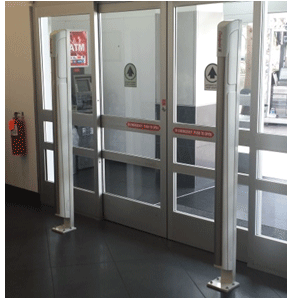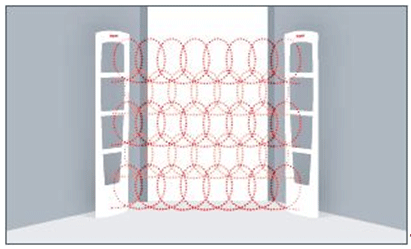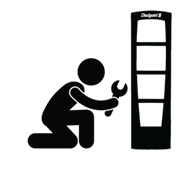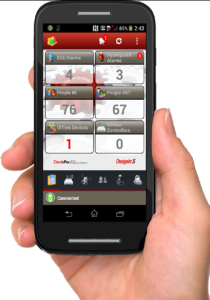Employee theft, shoplifting, and administrative mistakes are the three major sources of retail shrinkage in the United States. Shoplifting according to the National Association for Shoplifting prevention, is done by millions of people and is costing the country billions of dollar’s worth of merchandise that is being stolen. The millions of dollars spent by these retail stores to prevent shoplifting, is minor considering the billions of dollars lost by employee theft and shoplifting. Among other preventive measures your retail store is taking, is a well trained prevention team included? For more about this topic, follow the links below.
Anti-theft glass makes storefronts less vulnerable to break-ins
With all the talk about the very real need to protect the security of customer information and an enterprise’s data, it can be easy to forget the reality of in-person threats to a retail establishment. Theft and other forms of shrinkage are no small matter — in 2014, retailers reported average shrinkage of 1.4 percent, according to the most recent National Retail Federation/University of Florida National Retail Security Survey. That equates to $44 billion.
Shoplifting and organized retail crime represented 38 percent of inventory shrinkage for the 100 retailers that participated in the survey; in 2014 the average dollar loss was $318 per shoplifting incident. Criminals gain access in any number of ways; some brazenly walk in during operating hours while others break in while the store is closed.
A gas station/convenience store owner in Daytona Beach, Fla., experienced a number of storefront break-ins that involved criminals smashing the glass of the front door.
How to implement smarter employee theft detection
No retail business wants to believe that they might be subject to theft from their own employees. Unfortunately, it is a very real problem. It might be stealing items on their person, or exploiting employee discount privileges to significantly reduce the price – either way, employee theft can account for as much as 28 per cent of unexplained inventory loss globally, according to the recent Global Theft Barometer Report.
In order to prevent it, it is first important for employers to be aware why employees might feel the temptation to steal – from financial pressures in their personal lives, to general disgruntlement with their employers. But irrespective of the emotional reason that causes employees to consider stealing, it all boils down to something very simple: they think they can get away with it.
Deterring employee theft
A deterrence, of course, breaks the urge to do so. Whilst establishing predetermined consequences of theft will of course work to an extent, implementing a sophisticated detection system is arguably the most effective deterrent. Prevention is the best form of protection when it comes to retail shrinkage.
Coaching Lessons for Managing Your Loss Prevention Team
Loss prevention managers should know that the strength and quality of their teams can be directly proportional to the results achieved by team efforts.
Some of the most rewarding experiences in my work life have involved building teams. It has always been my opinion that the strength and quality of your team is directly proportional to the results.
With responsibility for loss prevention, new store development, and service operations, my primary function at work is leading teams of individuals to success. After 20+ years of retail experience, I thought I understood loss prevention team leadership. But in raising and coaching my son, I learned some things that have changed the way I view my teams at work.

 Employee theft continues to rise. In some retail settings it’s surpassed customer theft. There are a variety of reasons for the increase. One of them is that many managers have a hard time believing that “My people would do such a thing”. And because they have a hard time believing it they don’t take steps to combat it.
Employee theft continues to rise. In some retail settings it’s surpassed customer theft. There are a variety of reasons for the increase. One of them is that many managers have a hard time believing that “My people would do such a thing”. And because they have a hard time believing it they don’t take steps to combat it.
 Everyone I know loves a good “dumb criminal” story. In fact, I can’t go a day without someone (store managers, district managers, executives, family…) asking me to tell a crazy shoplifting story. I have a top 10 list that I usually gravitate towards, but after yesterday, I may have to change it to a top 11.
Everyone I know loves a good “dumb criminal” story. In fact, I can’t go a day without someone (store managers, district managers, executives, family…) asking me to tell a crazy shoplifting story. I have a top 10 list that I usually gravitate towards, but after yesterday, I may have to change it to a top 11.

 Tagged merchandise, metal racks, and electrical wiring in this incidental detection zone can have an adverse effect on system performance. As a general rule, tagged merchandise should be equivalent of at least ¾ of you doorway aisle width away from each EAS pedestal. Example; tags should be no closer than 4.5 feet, in a 6 foot doorway. Where possible: metal racks and electrical wiring should be 5 feet or more away from the system.
Tagged merchandise, metal racks, and electrical wiring in this incidental detection zone can have an adverse effect on system performance. As a general rule, tagged merchandise should be equivalent of at least ¾ of you doorway aisle width away from each EAS pedestal. Example; tags should be no closer than 4.5 feet, in a 6 foot doorway. Where possible: metal racks and electrical wiring should be 5 feet or more away from the system.
 In the past when managers discussed employee theft they mostly talked about the tangibles. They talked about their problems with staff stealing product, supplies and money – the physical things which can be touched and seen.
In the past when managers discussed employee theft they mostly talked about the tangibles. They talked about their problems with staff stealing product, supplies and money – the physical things which can be touched and seen.

